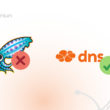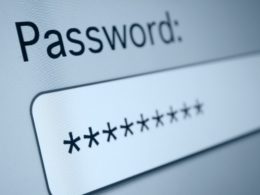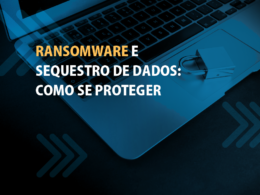Spam is a term that refers to the receipt of unreserved email messages. Sending these unwanted messages is practiced with various different objectives and also using different systems and media in the network.
Unlike most internet users believe, there are several types of spam strategies, and even though it is a term considered “old”, it is still widely used by digital criminals in an attempt to extort, steal, damage or kidnap information and devices, especially from companies and professionals.
In this text, you will see which types of spam exist and their characteristics, some ways to identify spam messages and also an efficient way to protect yourself.
SPAM TYPES
There are several types of spam with specific characteristics that differ from each other, but among the most common are:
- Rumors (Hoaxes) - Messages related to false stories that use social engineering with the objective that the user (recipient) directs to their contacts;
- Chain Letters - Messages that promise luck, wealth and other benefits to those who pass to a number of people and contacts within a given time;
- Advertisements - Disclosure of products, services and even political propaganda, this is the most common type of spam;
- Scams (Scam) - Content with misleading opportunities and offers that promise false results, such as job offers or very profitable business opportunities;
- Stelionate ( phishing ) - messages with disguised content to deceive recipients, requesting the provision of personal data and passwords;
- Malicious programs (viruses and worms) - content with information, attachments and harmful links that open can install viruses and cause loss of information;
- Pornography-Sending pornographic content via email, often pedophilia material. It is important security policies to prevent children from receiving this type of spam;
Among the most common are those of advertising, which are usually harmless, and those of phishing, which have evolved a lot in recent years, creating new versions such as Smissioning and Vishing , both with the same goal: stealing confidential information from the user who receives them.
But what many professionals wonder, after all, companies are the main target of this type of message, is like identifying a spam. And that is exactly what you will see in the next lines.
How to identify spam messages?
Spam messages can be well elaborated and deceive users, going through real messages. This is why it is important to know how to identify these messages to be discarded and classified as spam. See some items to be observed to identify spam messages:
- Suspected headers : Sender information and incomplete recipients, in both nicknames or generic names may appear. If the sender is unknown, recipients are hidden, this is a strong indication that the message is a spam and can have harmful content;
- Suspected Subject : If the subject field is suspicious and foreign to the recipients, be wary. This field is used to attract the user to open the messages, so be careful;
- Attachments and Links : Email messages containing attachments and links to clicked can be harmful;
- Single Receipt : Messages that inform you that they will be sent only once are spam;
- List and Removal Options : Some spans justify messaging abuse by stating as an option to be removed from the list and suggesting removal from the registration email. Usually these messages are spam;
There are many ways of your email to stop on spam shipping lists. There are companies that sell lists to send advertisements and numerous sites that use malicious methods to capture emails and even install viruses on computers, making these sources of spam.
It is important to avoid and be very careful when accessing suspicious content sites such as drugs, violence, pornography and games.
How to protect yourself from spam messages?
The best way to avoid receiving spam and safety and virus problems is to navigate with conscience in the network. The internet is necessary to care similar to those we have in traffic and when entering and leaving our homes.
The tips for reducing the occurrence of spam are directly related to the recommended care for internet users , so that they can safely enjoy all the resources and benefits it gives us.
Below are some important safety tips and spam prevention:
- Preserve and avoid enter personal data, emails and especially bank and credit card passwords;
- Have different emails for professional, personal, purchases and online activities;
- Avoid clicking suspicious links on websites, especially being unknown sites and also email messaging links;
- Caution in accessing and clicking promotions and opportunities for discounts and purchases can often disguise viruses and irregular records;
- Avoid making registration on websites without first obtaining complete information about the websites and products or services offered. It is also important to seek references from other sites and known;
- Always have enabled the anti-spam features of the email provided by the supplier of this service;
- It is important to use prevention tools on your computer, such as anti-spyware, firewall and antivirus;
- In business environments, use harmful websites blocking system , avoiding access to malicious links sent as spam.
We know that it is virtually impossible to avoid receiving unwanted messages, but following these tips and surfing the internet with precaution, it is possible to reduce spans and especially avoid security problems such as loss of information or bank problems and credit cards.
I hope this text has helped you protect yourself on the internet and avoid headaches.
Until later!












6 Comments
Comments closed